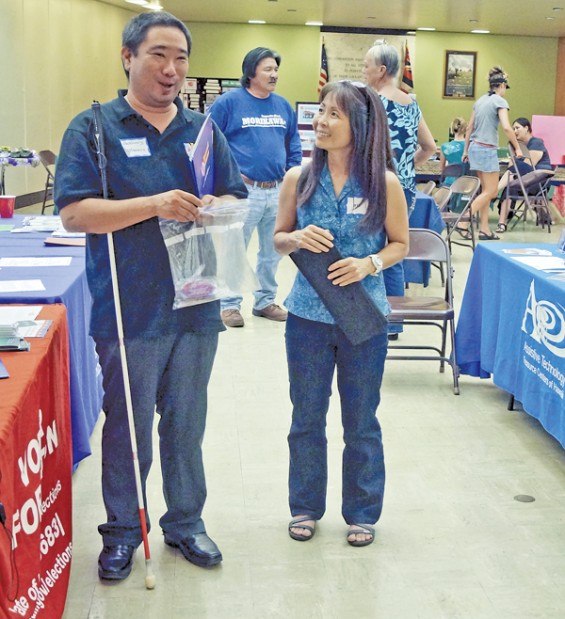LIHU‘E — The public is invited to join in the White Cane Safety Awareness Day Walk Oct. 4 from noon to 2:30 p.m. at the Kukui Grove Center. Sponsored by the Department of Human Services, Division of Vocational Rehabilitation and Services
LIHU‘E — The public is invited to join in the White Cane Safety Awareness Day Walk Oct. 4 from noon to 2:30 p.m. at the Kukui Grove Center.
Sponsored by the Department of Human Services, Division of Vocational Rehabilitation and Services for the Blind, and the National Federation of the Blind of Hawai‘i, Kaua‘i Chapter, the White Cane Safety Awareness Day promotes pedestrian safety and a greater awareness of the white cane and its significance of freedom, independence and empowerment for people who are blind and visually impaired.
During the event, A KNFB Reader Mobile demonstration as well as Accessible Voting Machine demonstration by Anthony Akamine of the Office of Elections will be available.
We believe the long white cane is a means to independence, states the National Federation of the Blind website. The white cane has proved a useful tool to millions of blind people in navigating their environments with confidence and safety, allowing blind people to travel where and when they want, and as such, leads to self-sufficiency.
The NFB is giving straight fiberglass canes free of charge to users in lengths of 25 to 63 inches by having the user visit www.nfb.or/free-cane-program and fill out an application.
This offer is available to any blind individual in the 50 states, the District of Columbia and Puerto Rico for their personal use. Requests may be made as often as every six months.
In 1921, James Biggs, a photographer from Bristol, England, became blind following an accident, states the Lions Club International website.
Feeling uncomfortable with the amount of traffic around his home, Biggs painted his walking stick white to be more easily visible, and in 1930, the late George Bonham, president of the Peoria Lions Club in Illinois, introduced the idea of using the white cane with a red band as a means of assisting the blind in independent mobility, the Peoria Lions approving of the idea.
White canes were made and distributed and the Peoria City Council adopted an ordinance giving the bearers the right-of-way to cross the street.
News of this activity spread to other Lions Clubs in the United States leading to experimentation of the idea by the visually handicapped.
The white cane idea met with overwhelming acceptance by both the blind and sighted people, providing cane users a unique method of identifying their special need for travel consideration among their sighted counterparts.
At the time the Lions Clubs were doing their work in the United States, Guilly d’Herbeont of France recognized the danger of traffic to blind people and launched a national “White stick movement” for blind people, donating 5,000 white canes to people in Paris.
On Oct. 6, 1964, the U.S. Congress approved a resolution authorizing the President of the United States to annually issue a proclamation designating Oct. 15 as National White Cane Safety Day.
The NFB, a leading organization for the blind, has further established the third week in May as White Cane Week, where a special concentration of efforts to educate the public concerning the hopes and aspirations of the blind is emphasized.
Call 274-3333 for more information about program services for people who are blind and visually impaired.


